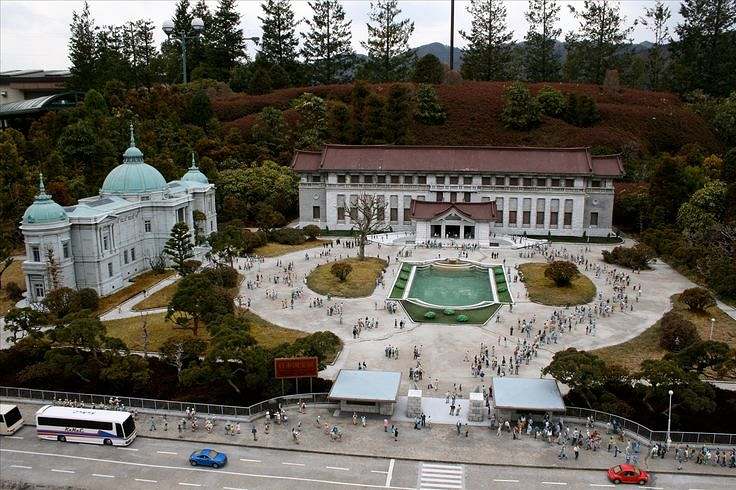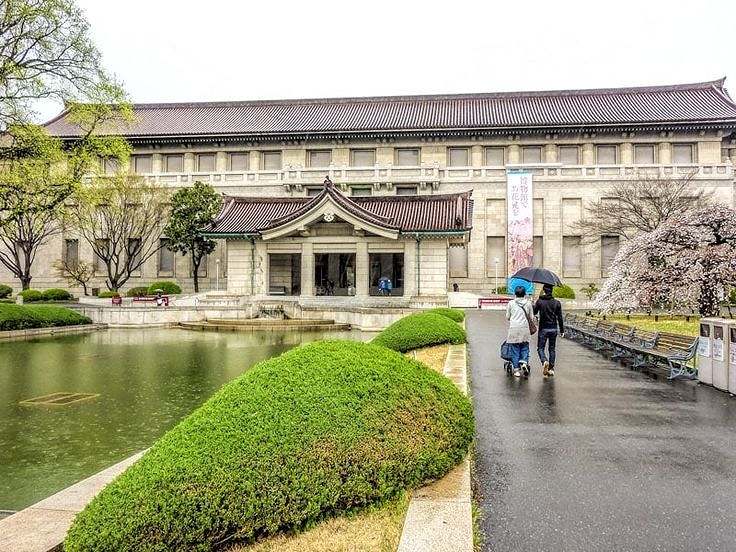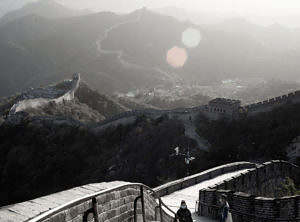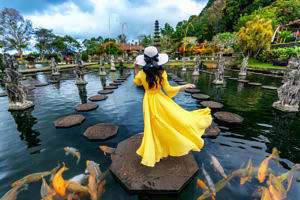Tokyo National Museum: A Must-Visit for Culture Enthusiasts
The Tokyo National Museum, located in the scenic expanse of Ueno Park in Tokyo, Japan, holds the prestigious title of being the country’s oldest and largest museum. Established in 1872, this esteemed institution is not just a museum; it’s a cultural landmark that showcases the depth and diversity of Japanese art and artifacts. With a collection that spans thousands of years, the museum offers an unparalleled look into the rich tapestry of Japanese history, from ancient pottery and samurai armor to delicate textiles and intricate ukiyo-e prints. It also extends its reach beyond Japan, presenting a significant array of Asian art and historical objects, providing visitors with a comprehensive view of the region’s cultural heritage. The Tokyo National Museum is more than a repository of art; it’s a gateway to understanding the evolution of Japanese and Asian cultures, making it an essential visit for anyone interested in exploring the nuances of this fascinating region’s past and present.

Introduction to Japan’s Premier Cultural Institution
Nestled in the heart of Tokyo, the Tokyo National Museum stands as a beacon of cultural heritage and historical preservation. As Japan’s oldest and most extensive museum, this esteemed institution offers visitors an unparalleled glimpse into the rich tapestry of Japanese history, art, and archaeology. With its expansive collections and expertly curated exhibits, the museum serves as a crucial educational resource and a must-visit destination for both locals and tourists alike.
The Collections
The Heart of Japanese Art and History
The Tokyo National Museum houses over 110,000 artifacts, each telling a unique story of Japan’s artistic and historical journey. Highlights include:
- Ancient Pottery and Sculptures: Trace the evolution of Japanese craftsmanship through exquisite Jomon period pottery and Buddhist sculptures.
- Samurai Armor and Swords: Delve into the world of the samurai with an impressive collection of armor, weapons, and related paraphernalia.
- Ukiyo-e Paintings and Prints: Explore the vibrant world of Edo-period art through iconic woodblock prints and paintings.
- Imperial Treasures: Marvel at the elegance of the Imperial collections, featuring items directly connected to the Japanese Imperial family.
Special Exhibitions and Cultural Events
A Calendar of Cultural Immersion
The museum actively hosts special exhibitions throughout the year, providing fresh perspectives on both traditional and contemporary aspects of Japanese culture. These limited-time events offer a deeper understanding of specific themes, artists, or historical periods, making every visit a unique experience.
Actual exhibitions and events calendar of museum website
Educational Programs and Resources
Fostering Cultural Appreciation
Dedicated to education and cultural exchange, the Tokyo National Museum offers a variety of programs designed to engage audiences of all ages. From guided tours and lectures to interactive workshops and cultural demonstrations, these initiatives aim to foster a deeper appreciation for the richness of Japanese culture and history.
Visitor Information
Planning Your Visit
- Opening Hours: The museum welcomes visitors from Tuesday to Sunday, offering ample opportunity to explore its vast collections. 9:30 a.m.-5:00 p.m.
Open until 7:00 p.m. on Fridays and Saturdays. Last admission 30 minutes before closing. Kuroda Memorial Hall is open until 5:00 p.m. - Admission Fees: A nominal entry fee grants access to all permanent exhibits, with special exhibitions occasionally requiring a separate ticket.
- Accessibility: The museum is fully accessible, ensuring that everyone can enjoy the treasures it holds.
Explore More with Our Interactive Museum Map
mermaidCopy codegraph TD;
A[Entrance] --> B[Permanent Exhibits];
A --> C[Special Exhibitions];
B --> D[Ancient Pottery and Sculptures];
B --> E[Samurai Armor and Swords];
B --> F[Ukiyo-e Paintings and Prints];
B --> G[Imperial Treasures];
C --> H[Current Special Exhibition];
A --> I[Visitor Information];
I --> J[Gift Shop];
I --> K[Café];
What to See at the Tokyo National Museum
The Honkan (Japanese Gallery)
The Honkan, or Japanese Gallery, stands as a cornerstone of the Tokyo National Museum, showcasing the evolution of Japanese art from its ancient roots through to the 19th century. Visitors can immerse themselves in the depth of Japanese culture through key exhibits that span centuries of artistic expression.
The gallery takes pride in its extensive collection of samurai armor, showcasing the intricate craftsmanship and design that characterized Japan’s warrior class. Additionally, the gallery houses a remarkable array of pottery, offering insights into the daily lives and rituals of ancient Japanese societies.
Another highlight includes the ukiyo-e prints, vibrant artworks that capture the fleeting beauty of the Edo period’s urban lifestyle.
The Toyokan (Asian Gallery)
Venturing into the Toyokan, or Asian Gallery, guests embark on a journey across Asia, exploring a rich diversity of art and artifacts from China, Korea, and Southeast Asia.
This gallery illuminates the interconnectedness of Asian cultures through its curated selection of notable pieces. Chinese ceramics, known for their exquisite beauty and technical sophistication, stand out as a testament to China’s long-standing traditions in pottery and porcelain.
Additionally, the gallery features Indian sculptures that embody the spiritual and artistic heritage of the Indian subcontinent, offering a glimpse into the region’s religious and cultural narratives.
The Heiseikan
The Heiseikan serves dual purposes, hosting the museum’s special exhibitions and housing the Japanese Archaeology Gallery. This space becomes a dynamic venue where visitors can engage with thematic exhibitions that delve into various aspects of Japanese and global cultures, providing fresh perspectives and new discoveries with each visit.
The Japanese Archaeology Gallery presents a fascinating look into Japan’s ancient past, from prehistoric times to the more recent historical periods, through artifacts that have shaped the understanding of Japan’s early societies.
The Hyokeikan
As a historically significant building, the Hyokeikan holds a special place within the Tokyo National Museum complex. This architectural marvel not only adds to the museum’s aesthetic appeal but also serves as a venue for specific displays and events.
While its use may vary, the Hyokeikan’s presence is a reminder of the museum’s long-standing commitment to preserving and celebrating both art and history.
The Gallery of Horyuji Treasures
Dedicated to the artifacts of the Horyuji Temple, the Gallery of Horyuji Treasures offers a profound insight into Buddhist art and its role in Japanese culture. This collection, consisting of over 300 items designated as National Treasures and Important Cultural Properties, represents the deep spiritual and historical significance of the Horyuji Temple.
Visitors can expect to see an array of objects ranging from religious statuary to ceremonial utensils, each piece echoing the rich Buddhist traditions that have been an integral part of Japan’s cultural fabric.
This intuitive map guides you through the museum’s layout, ensuring you don’t miss any of the fascinating exhibits on offer. From the moment you step into the entrance, a world of historical and artistic marvel awaits, ready to captivate your imagination and deepen your understanding of Japan’s rich heritage.
The Tokyo National Museum stands as a testament to Japan’s enduring cultural legacy. Through its extensive collections, dynamic exhibitions, and engaging educational programs, it continues to inspire and educate visitors from around the world. Whether you’re a history buff, art aficionado, or simply curious about Japanese culture, a visit to this iconic institution promises a rewarding and enriching experience.
Sources:
Tokio National Museum website – https://www.tnm.jp/







